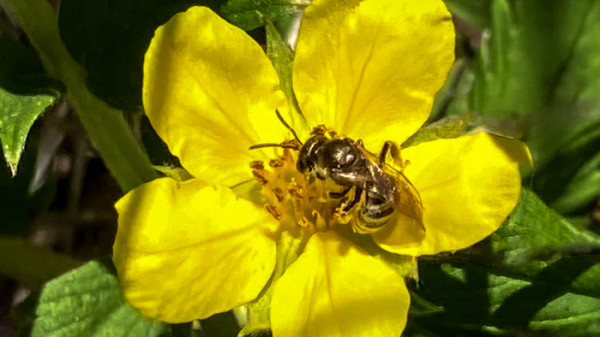You can’t see it, but different substances in the petals of flowers create a “bulls-eye” for pollinating insects, according to a Clemson University scientist whose research sheds light on chemical changes in flowers which helps them respond to environmental changes, including climate change, that might threaten their survival.
Matthew H. Koski, an assistant professor of biological sciences in the Clemson College of Science, led a research team that studied the bright, yellow flowers of Argentina anserina — a member of the rose family commonly known as silverweed — to learn how pigments in the petals that are visible only in the ultraviolet spectrum play an integral part in the plant’s plasticity; that is, its ability to quickly respond to a changing environment. The team also included Clemson researchers Lindsay M. Finnell, Elizabeth Leonard and Nishanth Tharayil.
The journal Evolution featured the findings on the cover of its March edition.
The researchers studied silverweed growing at different elevations in southwestern Colorado to better understand the roles of the various UV-absorbing chemicals in the plants’ petals and how these chemicals work to aid in pollination and, thus, reproduction.
Koski explained that although humans cannot see the UV patterns on the flower’s petals, many of its pollinators can.
Read more at: Clemson University
Clemson University Assistant Professor of Biological Sciences Matthew Koski led a team of researchers who studied the flowers of Argentina answering - a member of the rose family commonly known as silverweed - to learn how pigments in the petals that are visible only in the ultraviolet spectrum play an integral part in the plant's plasticity. (Photo Credit: Matthew Koski)


